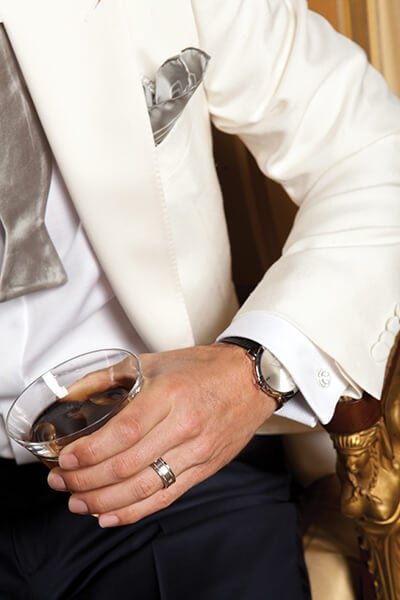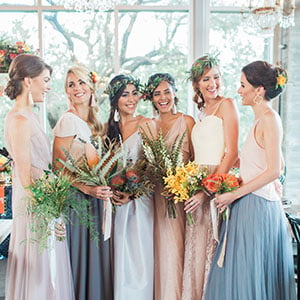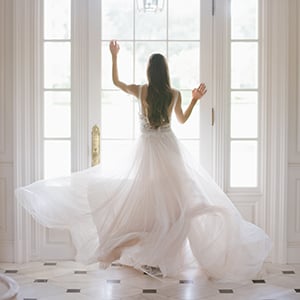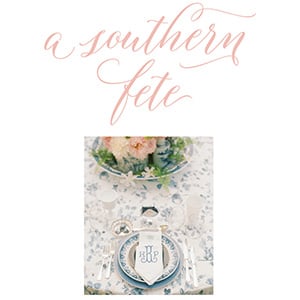LGBT Marriage: Buying, Giving and Wearing Wedding Rings

Photo: Larry Fagala - Jewelry: Zadok Jewelers
A common question many gay couples have is, “Does the person who was proposed to have to ‘propose back’ with a ring?” With gay and lesbian couples, there’s no right answer about who proposes, who gets a ring, and what that ring looks like. While there is no standard “gay-engagement ring” or “gay-wedding band,” this can, however, be one of the first areas where you as a couple express your personality through your wedding.
If you and your partner are talking about marriage, don’t be afraid to have a conversation about the ring. It’s better to know what your partner likes so you can be prepared.
I’ve seen rings that are mirror images of each other, rings that had a fingerprint imprinted on them, simple platinum or steel bands, and rings that were formed from family jewelry. I’ve noticed that many lesbian couples don’t want a “rock”—a big diamond engagement ring. I’ve seen femme lesbians present their butch partner with cufflinks instead of an engagement ring—a very cool idea.
I’ve found that younger lesbian brides (typically those under 40) are likelier to wear two rings. For example, my wife Jen, like many lesbians, wears her engagement ring and wedding band next to each other on the same finger. This is very common, and of course, traditional. My engagement ring doesn't have a stone (my choice), so my engagement ring is now on the ring finger of my right hand, and my wedding band is on the ring finger of my left hand.
In my observation, many men will wear only one ring, not two. In this case, the engagement ring will often double as a wedding band.
In many cases, gay and lesbian couples have been together for so many years that they already own rings that symbolize the permanence of their relationship, and those are the rings that they will continue to wear after their marriage. Conversely, many couples that wear rings as a symbol of their relationship choose to pick out new wedding bands together—bands that symbolize the next chapter in their lifetime journey. In my experience, couples who have been together for a long time are less likely to have had a traditional “pop the question” proposal experience, and hence less likely to buy or give engagement rings.
Whatever ring option you choose, walking into a jewelry store with your fiancée or fiancé looking for a wedding band can be intimidating to say the least, particularly if you would like a nontraditional band. Call around ahead of time to gauge the attitude of your local jewelers about working with same-sex couples. They may be great, or you may encounter an awkward pause, or even outright homophobia—but at least you are dealing with it on the phone rather than face-to-face. If you do have a great phone call, make sure you catch the name of the associate you spoke to, so that you can work with the right person when you go to the store. And don’t forget to share that information with other gay and lesbian couples you know who are determining how best to handle the “ring thing.” They’ll thank you for it!




